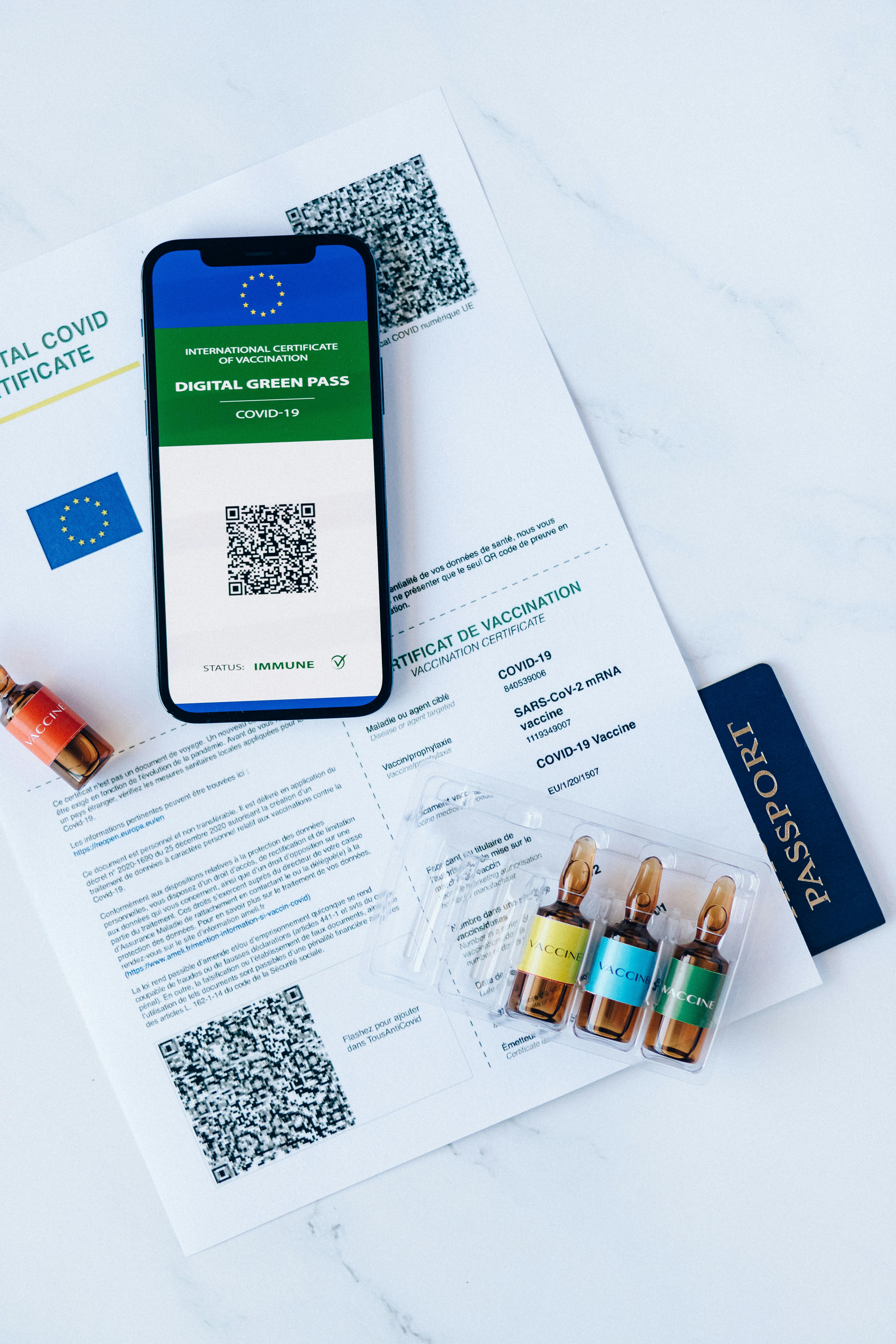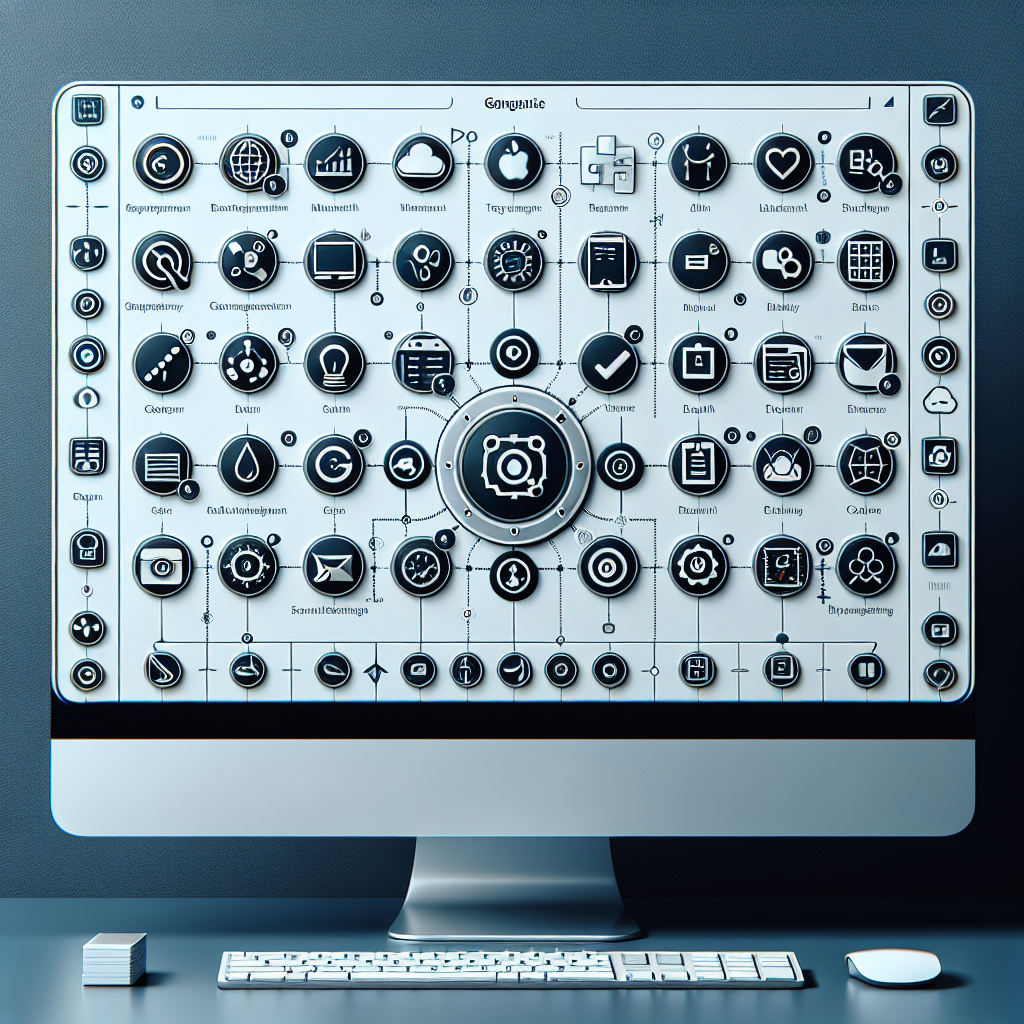Do you find yourself constantly searching for important files or struggling to stay on top of tasks? In the age of digital chaos, maintaining an organized digital space has become increasingly vital. With the explosion of technology and the endless stream of information available at our fingertips, the need for effective digital organization has never been more crucial. But can digital organization truly enhance overall productivity? In this article, we will explore the benefits of keeping a well-organized digital environment and how it can positively impact your workflow, allowing you to make the most of your time and energy. So, let’s dive in and uncover the secrets of achieving digital harmony.
Benefits of Digital Organization
Improved Time Management
Digital organization can greatly improve your time management skills. By utilizing digital tools, you can efficiently plan and schedule your tasks, appointments, and deadlines. Digital calendars allow you to easily schedule and track your commitments, set reminders, and receive notifications. With the ability to access your calendar from multiple devices, you can stay organized and be aware of your upcoming events wherever you are.
Enhanced Accessibility
One of the key benefits of digital organization is the enhanced accessibility it offers. With cloud storage solutions, you can store your documents, files, and data in a secure online space. This means you can access your important information from anywhere, as long as you have an internet connection. No longer will you have to worry about carrying around physical files or forgetting important documents at home. Digital organization ensures that everything you need is readily available at your fingertips.
Elimination of Clutter
Digital organization helps eliminate clutter by reducing the need for physical storage space. Instead of having stacks of papers, binders, and notebooks taking up valuable space in your workspace, you can digitize your documents and store them electronically. This not only saves physical space but also makes it easier to find and retrieve specific information. With a simple search function, you can locate files in seconds, eliminating the frustrating and time-consuming task of sifting through piles of paper.
Streamlined Workflow
Having a streamlined workflow is essential for productivity, and digital organization can help you achieve just that. By using task management applications, you can create and prioritize your to-do lists, set deadlines, and track your progress. These tools allow you to break down your tasks into smaller, manageable steps, ensuring that you stay on track and complete your work efficiently. With a clear and organized workflow, you can focus on the most important tasks at hand and avoid feeling overwhelmed by a disorganized workload.
Digital Tools for Organization
Digital Calendars
Digital calendars are an essential tool for effective organization. They allow you to schedule your appointments, meetings, and events, and set reminders to ensure you never miss a deadline. With the ability to sync your calendar across multiple devices, you can easily access and update your schedule wherever you are. Whether it’s on your smartphone, tablet, or computer, a digital calendar keeps you organized and on top of your commitments.
Task Management Applications
Task management applications help you keep track of your to-do lists, prioritize tasks, and manage your projects effectively. These apps allow you to break down your tasks into smaller subtasks and set due dates for each one. With features like reminders and notifications, you can stay on top of your tasks and ensure that nothing falls through the cracks. Task management applications provide a visual representation of your workload, helping you stay organized and focused on completing your work efficiently.
Note-Taking Apps
Note-taking apps are a great tool for capturing and organizing your thoughts, ideas, and important information. They allow you to create digital notes, which can be easily organized into different categories or folders. With the ability to search for specific keywords, you can quickly find the information you need without having to flip through pages of handwritten notes. Note-taking apps also offer features like tagging, highlighting, and syncing across devices, making it easy to access and share your notes whenever you need them.
Cloud Storage Solutions
Cloud storage solutions provide a secure and convenient way to store and access your files and documents. With cloud storage, you can store your files on remote servers, eliminating the need for physical storage devices. This allows you to access your files from anywhere, as long as you have an internet connection. Cloud storage solutions also offer features like file sharing and collaboration, making it easy to collaborate with colleagues or share documents with clients. Additionally, cloud storage provides automatic backups, ensuring that your data is safe even in the event of hardware failure or loss.

Optimizing Email Management
Using Filters and Labels
Managing your email can be a time-consuming task, but with the use of filters and labels, you can automate and streamline the process. Filters allow you to automatically sort incoming emails based on criteria you specify, such as sender, subject, or keywords. By setting up filters, you can ensure that important emails are prioritized and that spam or low-priority messages are filtered out. Labels, on the other hand, allow you to categorize and organize your emails into different folders or tags. This makes it easier to find specific emails and keep your inbox organized.
Creating Folders and Subfolders
Creating folders and subfolders in your email client is another effective way to manage your emails. By categorizing your emails into different folders, you can keep your inbox tidy and easily locate specific messages. For example, you can create folders for different clients, projects, or departments. Within each folder, you can create subfolders to further organize your emails. This hierarchical structure allows you to have a clear overview of your email correspondence and ensures that important emails are easily accessible.
Setting up Autoresponders
Autoresponders are a valuable tool for managing your email communications. They allow you to set up automatic replies to incoming emails, informing senders that you are unavailable or providing them with relevant information. Autoresponders are particularly useful when you are out of the office or on vacation, as they ensure that important contacts are aware of your absence and can provide alternative contact information if necessary. By using autoresponders, you can effectively manage your email communications and maintain professional communication with minimal effort.
Unsubscribing from Unnecessary Emails
Email overload can be a major productivity killer. To reduce the amount of clutter in your inbox, take the time to unsubscribe from unnecessary emails and newsletters. Many emails provide an unsubscribe link at the bottom, allowing you to easily opt-out of future communications. By minimizing the number of unnecessary emails in your inbox, you can focus on the important messages and prevent them from getting lost or buried amongst the clutter.
Efficient File Organization
Creating a Logical Folder Structure
Efficient file organization starts with creating a logical folder structure. Before saving your files, consider the categories and subcategories that make the most sense for your work or personal needs. By creating a clear and intuitive folder structure, you can easily find and retrieve your files when you need them. For example, if you’re organizing work-related files, you could create folders based on clients, projects, or departments. By consistently applying this folder structure, you can maintain a well-organized filing system that maximizes productivity.
Using File Naming Conventions
File naming conventions are essential for efficient file organization. When saving files, use descriptive and consistent names that accurately reflect their content and purpose. This makes it easier to search for specific files and helps you avoid confusion or duplication. Consider including relevant information such as project name, date, or version number in the filename. By adopting a standardized file naming convention, you can ensure that your files are easily identifiable and organized in a consistent manner.
Utilizing Metadata
Metadata provides additional information about your files, helping you organize and search for them more effectively. By adding metadata tags, keywords, or descriptions to your files, you can provide context and make them more discoverable. Most operating systems and productivity software allow you to add metadata to files, such as author, date created, or keywords. By utilizing metadata, you can enhance the organization and searchability of your files, making it easier to locate and manage your documents.
Regularly Archiving and Deleting Files
Regularly archiving and deleting files is crucial for maintaining an efficient file organization system. As files become outdated or are no longer needed, it’s important to archive or delete them to prevent your storage space from becoming cluttered. Archiving involves moving files that are still relevant but not frequently accessed to a separate location or backup storage. Deleting, on the other hand, involves permanently removing files that are no longer necessary. By regularly reviewing and managing your files, you can ensure that your file organization remains optimized and uncluttered.

Collaboration and Communication Tools
Project Management Software
Project management software is a valuable tool for team collaboration and organization. These platforms provide a centralized hub where team members can collaborate, track progress, and manage tasks and deadlines. Project management software typically includes features like task assignment, file sharing, and communication tools, making it easy to coordinate and collaborate on projects. By utilizing project management software, you can streamline your team’s workflow, improve communication, and ensure that everyone is on the same page.
Instant Messaging Platforms
Instant messaging platforms are essential for real-time communication and quick collaboration. These platforms allow team members to exchange messages, files, and information in real-time, eliminating the need for lengthy email threads or scheduling meetings. Instant messaging platforms often include features like group chats, file sharing, and video calling, providing a convenient and efficient way to communicate with team members. By using instant messaging platforms, you can foster instant collaboration, improve response times, and enhance overall communication within your team.
Video Conferencing Applications
Video conferencing applications have become increasingly important for remote work and virtual meetings. These applications allow you to conduct face-to-face meetings and discussions with colleagues or clients, regardless of geographical location. Video conferencing applications typically offer features like screen sharing, chat functionality, and recording options, making it easy to collaborate and share information in real-time. By utilizing video conferencing applications, you can bridge the gap between remote team members, improve communication, and maintain a sense of connection within your team.
Shared Document Editors
Shared document editors are collaborative tools that allow multiple users to work on the same document simultaneously. These tools provide a centralized place where team members can create, edit, and comment on documents in real-time. With shared document editors, you can eliminate the need for back-and-forth email attachments or conflicting file versions. Instead, everyone can work on the same document, see changes in real-time, and collaborate effectively. Shared document editors are particularly useful for team projects, group brainstorming sessions, or any task that requires multiple people to contribute to a single document.
Automating Repetitive Tasks
Using Macros and Keyboard Shortcuts
Macros and keyboard shortcuts are powerful tools for automating repetitive tasks and saving time. Macros allow you to record a series of actions or commands and replay them with a single click or keyboard shortcut. Keyboard shortcuts, on the other hand, provide quick access to specific commands or functions, eliminating the need for manual navigation through menus. By using macros and keyboard shortcuts, you can automate tasks like formatting documents, generating reports, or performing complex calculations. This not only saves time but also reduces the chances of errors or inconsistencies.
Automating Data Entry
Data entry can be a time-consuming and error-prone task, but with automation tools, you can streamline the process. There are various software applications and tools available that can automatically extract data from documents, forms, or spreadsheets and populate them into your desired format or system. By automating data entry, you can minimize manual data input, improve accuracy, and free up time for more meaningful work.
Automating Email Responses
Responding to emails can be a drain on your productivity, but with email automation tools, you can delegate this task to technology. Email automation tools allow you to create pre-written email templates or canned responses that can be sent automatically based on specific triggers or conditions. For example, you can set up an autoresponder to send a thank-you email whenever someone fills out a contact form on your website. By automating email responses, you can save time, maintain consistent communication, and focus on more important tasks.
Automating File Management
File management can be a tedious task, but with automation tools, you can streamline and simplify the process. There are various file management tools available that can automatically organize, rename, or move files based on predetermined rules or criteria. For example, you can set up a rule to automatically move all files from a specific folder to a designated location. By automating file management, you can save time, maintain a well-organized file structure, and reduce the risk of losing or misplacing important files.

Managing Digital Distractions
Minimizing Notifications
Notifications can be a major source of distraction and can disrupt your workflow. To minimize distractions, it’s important to disable or manage your notifications effectively. Take the time to review your notification settings for applications, emails, or messaging platforms, and disable any unnecessary or non-urgent notifications. By only allowing important notifications to interrupt your work, you can maintain focus and prevent constant interruptions.
Blocking Distracting Websites or Apps
If you find yourself easily distracted by certain websites or applications, consider using website or app blockers. These tools allow you to temporarily block access to specific websites or applications for a designated period of time. By blocking distracting websites or apps during your work hours, you can eliminate the temptation to stray from your tasks and maintain your focus.
Using Focus Assist Features
Many operating systems and productivity software offer focus assist or “do not disturb” features. These features temporarily silence notifications, alerts, or other distractions, allowing you to concentrate on your work without interruptions. By enabling focus assist during your dedicated work time, you can create an interruption-free environment and boost your productivity.
Establishing Productive Habits
Managing digital distractions ultimately comes down to establishing productive habits and self-discipline. Set boundaries for yourself by designating specific work hours and creating a routine that supports focused work. Avoid multitasking and prioritize single-tasking, as it has been proven to be more effective for productivity. Take regular breaks and practice stress-reducing activities like meditation or exercise to help maintain mental clarity and focus. By establishing productive habits, you can effectively manage digital distractions and optimize your productivity.
Digital Workspaces for Productivity
Utilizing Multiple Monitors
Utilizing multiple monitors can significantly enhance your productivity by providing more screen real estate. With multiple monitors, you can have different applications or documents open and visible at the same time, eliminating the need for constant switching between windows. This allows for a more efficient workflow and easier referencing of information. Whether you are working on complex tasks that require multiple open windows or simply need to have a reference document visible while working on another task, multiple monitors can greatly improve your productivity.
Customizing Desktop and Browser
Customizing your desktop and browser to suit your specific workflow can enhance your productivity. Arrange shortcuts or widgets on your desktop for quick access to frequently used applications or files. Customize your browser settings, bookmarks, or extensions to optimize your browsing experience and make common tasks easier. By tailoring your desktop and browser to your needs, you can streamline your workflow and save valuable time.
Organizing Virtual Desktops
Many operating systems now offer the option to have multiple virtual desktops, allowing you to organize your workspace more effectively. Virtual desktops enable you to group related tasks or applications together, reducing clutter and improving focus. For example, you can have one virtual desktop dedicated to your work-related tasks and applications and another for personal or leisure activities. By separating your workspaces, you can minimize distractions and maintain a clear and organized digital workspace.
Creating Work-specific Profiles
Creating work-specific profiles on your devices can further optimize your digital workspace. By creating separate user profiles or accounts for work-related tasks, you can have customized settings, applications, and files that are specific to your work needs. This separation reduces potential distractions from personal files or applications, allowing you to maintain a focused and efficient work environment. Work-specific profiles help create a clear boundary between your personal and professional life, enhancing your productivity and work-life balance.
Tracking and Analyzing Productivity
Time-tracking Software
Time-tracking software allows you to monitor and analyze how you spend your time on different tasks or activities. By tracking your time, you can identify patterns and trends, understand how you allocate your time, and identify areas for improvement. Time-tracking software often provides detailed reports and visualizations, allowing you to gain insights into your productivity and make informed decisions on how to optimize your time.
Productivity Analytics Tools
Productivity analytics tools provide comprehensive insights into your work habits, efficiency, and overall productivity. These tools analyze data from various sources, such as email, calendars, task management apps, and communication platforms, and provide visualizations and reports. By leveraging productivity analytics, you can evaluate your productivity trends, identify areas of improvement, and make data-driven decisions to enhance your efficiency and focus.
Digital Journaling Applications
Digital journaling applications provide a platform for documenting your thoughts, ideas, and reflections. By keeping a digital journal, you can track your accomplishments, challenges, and progress. Journaling allows you to reflect on your achievements and learn from your experiences. Additionally, digital journaling applications often provide features like tagging, searching, and archiving, making it easy to find relevant entries and review your personal growth.
Gamified Task Management Apps
Gamified task management apps incorporate elements of game design and mechanics to motivate and engage users in completing tasks. These apps often include features like points, levels, achievements, or leaderboards, turning task completion into a fun and rewarding experience. By using gamified task management apps, you can add an element of excitement and motivation to your work, boosting your productivity and helping you stay on track with your goals.
Integrating Personal and Professional Life
Separating Work and Personal Devices
Separating work and personal devices is an effective way to maintain a healthy work-life balance and avoid distractions. By having dedicated devices for work and personal use, you can create a clear boundary between these two aspects of your life. This separation helps to minimize the temptation to check work-related emails or engage in work tasks during your personal time. Having separate devices also allows you to prioritize your personal life and maintain a healthy level of detachment from work-related stress or responsibilities.
Digital Boundaries and Routines
Establishing digital boundaries and routines is crucial for managing the integration of your personal and professional life. Set specific time blocks for work-related activities and strictly adhere to them. Define boundaries for when you will and will not engage in work-related tasks, and communicate these boundaries to colleagues or clients. By setting clear boundaries and routines, you can create a healthy balance between your personal and professional life, reduce stress, and improve overall well-being.
Using Remote Work Strategies
Remote work has become increasingly common, and it requires effective strategies to ensure productivity and work-life balance. When working remotely, create a dedicated workspace that separates your work environment from your personal space. Establish a regular schedule that aligns with your most productive hours and fits your personal obligations. Set clear expectations with clients or colleagues regarding communication and availability. By implementing remote work strategies, you can effectively integrate your personal and professional life, maintaining productivity while achieving a healthy work-life balance.
Prioritizing Self-care and Breaks
Maintaining a balanced and productive life requires prioritizing self-care and taking regular breaks. Schedule time for self-care activities such as exercise, meditation, or hobbies. Taking regular breaks throughout the workday helps to maintain focus and prevent burnout. Prioritizing self-care and breaks allows you to recharge and rejuvenate, ultimately enhancing your productivity and well-being.
In conclusion, digital organization offers numerous benefits that can greatly enhance overall productivity. By leveraging digital tools, optimizing email management, efficient file organization, utilizing collaboration and communication tools, automating repetitive tasks, managing digital distractions, optimizing digital workspaces, tracking and analyzing productivity, and integrating personal and professional life, you can create a well-organized and efficient digital workflow. By implementing these strategies and utilizing the available digital tools, you can maximize your productivity, eliminate clutter, and achieve a healthier work-life balance. Embrace digital organization and unlock your full potential for enhanced productivity and success.
